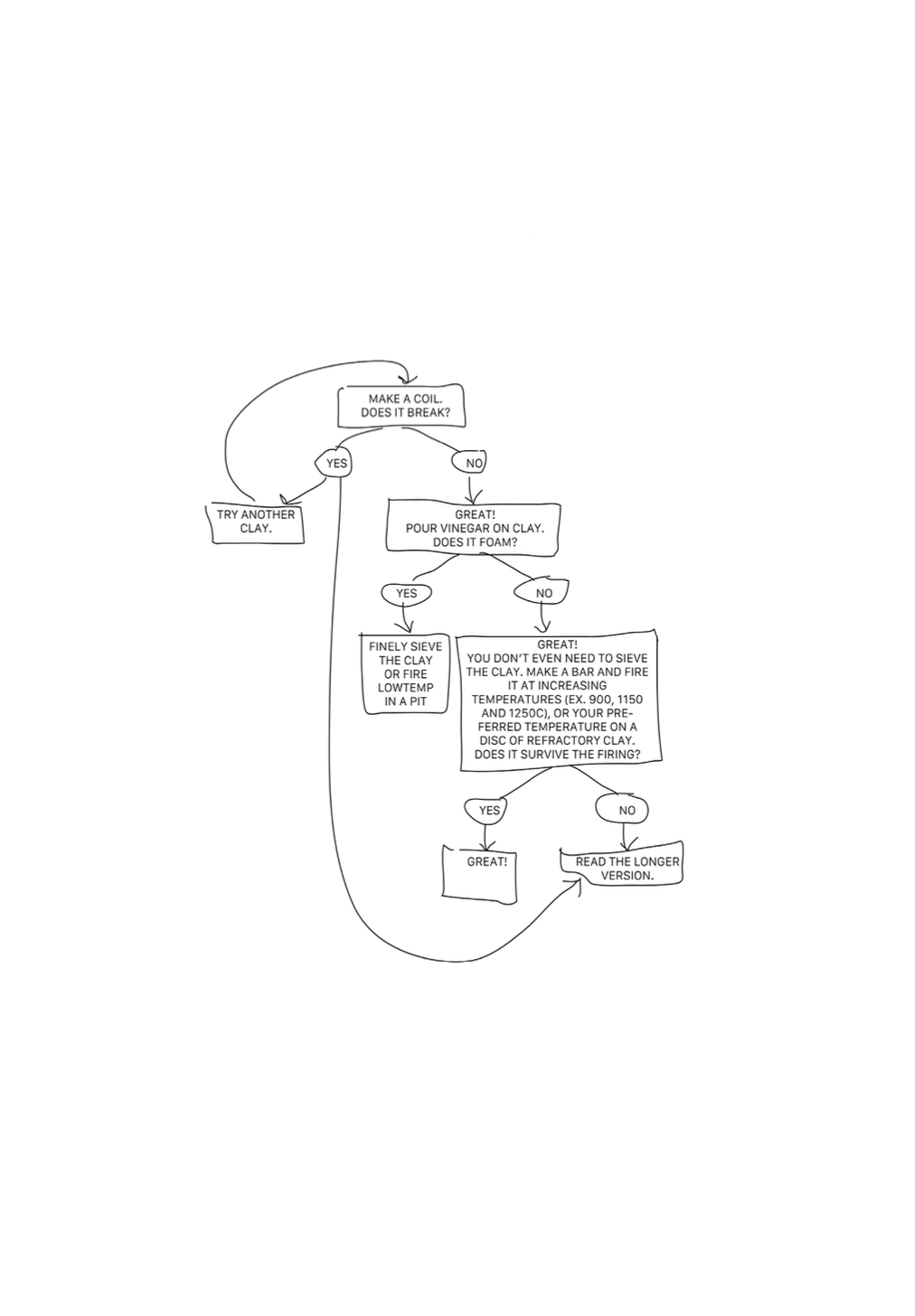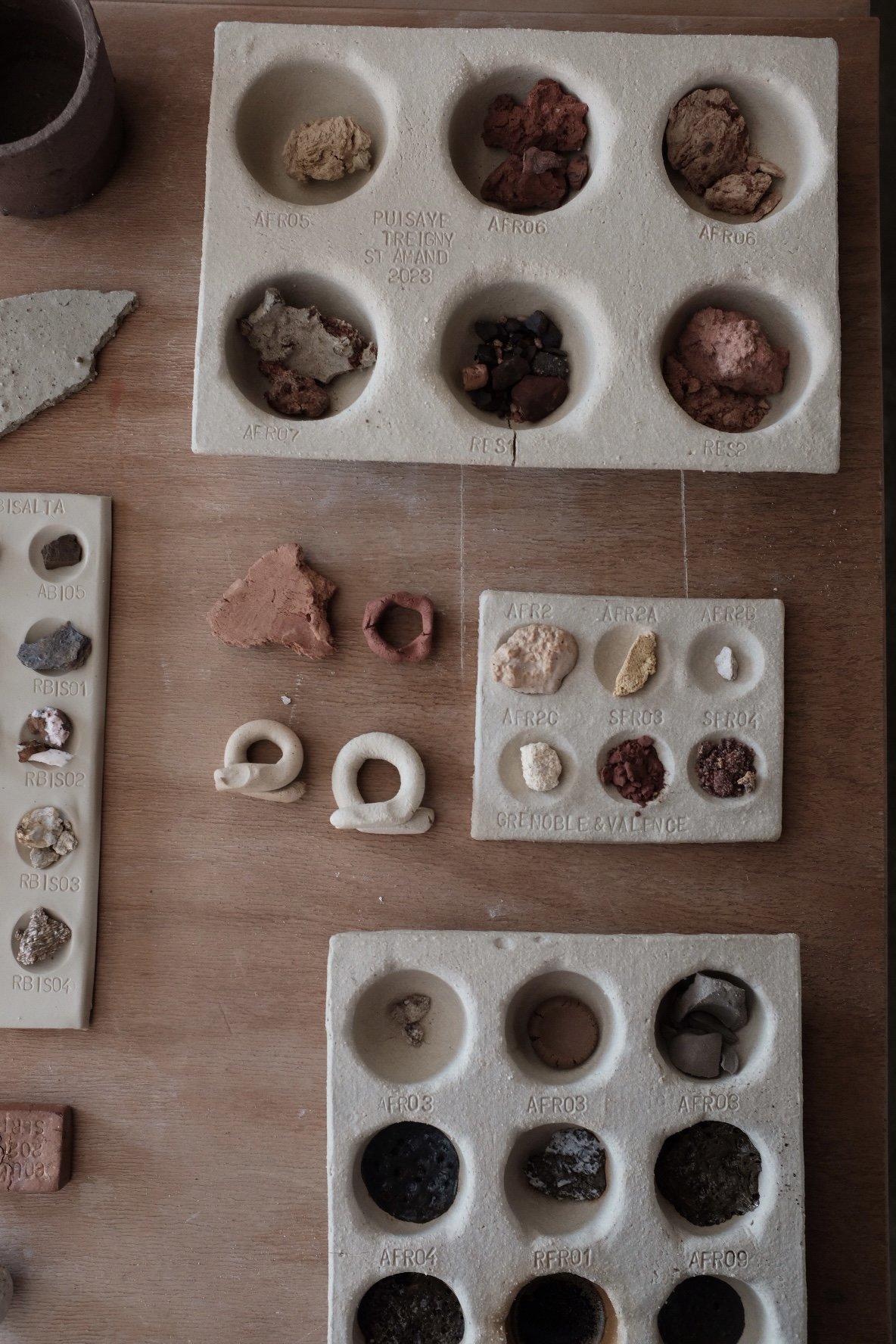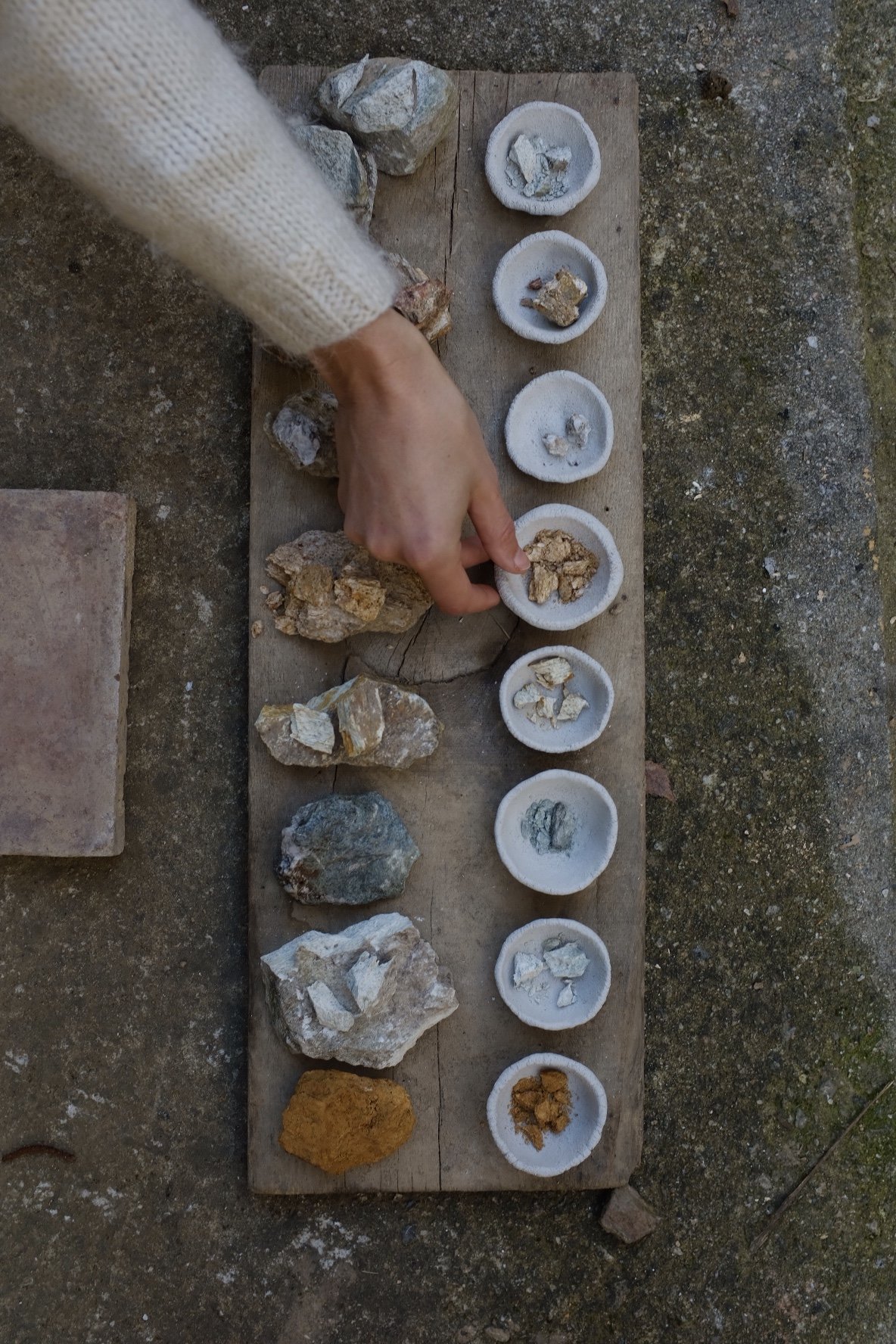 Image 1 of 16
Image 1 of 16

 Image 2 of 16
Image 2 of 16

 Image 3 of 16
Image 3 of 16

 Image 4 of 16
Image 4 of 16

 Image 5 of 16
Image 5 of 16

 Image 6 of 16
Image 6 of 16

 Image 7 of 16
Image 7 of 16

 Image 8 of 16
Image 8 of 16

 Image 9 of 16
Image 9 of 16

 Image 10 of 16
Image 10 of 16

 Image 11 of 16
Image 11 of 16

 Image 12 of 16
Image 12 of 16

 Image 13 of 16
Image 13 of 16

 Image 14 of 16
Image 14 of 16

 Image 15 of 16
Image 15 of 16

 Image 16 of 16
Image 16 of 16

















Introduction to wild clays - March - EN
Workshop held online, in English, on Zoom. Two consecutive Saturday afternoon.
Rome time — 8 March 2024 — 2pm - 5pm
Rome time — 15 March 2024 — 2pm - 5pm
The workshop will be recorded and a link sent to all participants if they cannot join live.
Beginner and intermediate level: open to all skill levels, but it covers technical material.
During this workshop we will discuss how to identify clays in nature, where and what to look for, if and how to process the foraged clay and the main tests to be carried out on a material. Participants will then be able to use the information covered in the workshop to identify materials in their territory and add them to their studio practice as clay bodies, slip, glazes and grog.
An introductory text will be sent to the participants prior to the workshop, summarising all the topics and including a list of resources on wild clay.
No equipment or materials are needed, although participants are invited to bring their own material samples to the second session of workshop. During the first lesson indications on how to collect, process, fire and carry out several tests will be given to the participants. During the second lesson time will be given to each participant to discuss their own materials available in their surroundings.
Workshop topics
What is clay?
Different types of natural clays: the geological journey of clay
How to observe the land: tools and resources available to locate clay
How to identify clay in nature and ethics/methods of collection
If and how to process clay
Plasticity, texture, shrinkage and firing tests
Problematic minerals and what to do with them
Tempering clay
Volumetric blends
Firing and interpreting results
How to “correct” or adjust a clay body
24 hours prior to the event a Zoom will be sent to the email that you registered with. All participants will be provided with a PDF document a few days before the workshop. All participants agree that they will not share, reproduce or alter the resources given to them.
If you have other questions on the workshop, please send me an email at unurgent.argilla@gmail.com
Workshop held online, in English, on Zoom. Two consecutive Saturday afternoon.
Rome time — 8 March 2024 — 2pm - 5pm
Rome time — 15 March 2024 — 2pm - 5pm
The workshop will be recorded and a link sent to all participants if they cannot join live.
Beginner and intermediate level: open to all skill levels, but it covers technical material.
During this workshop we will discuss how to identify clays in nature, where and what to look for, if and how to process the foraged clay and the main tests to be carried out on a material. Participants will then be able to use the information covered in the workshop to identify materials in their territory and add them to their studio practice as clay bodies, slip, glazes and grog.
An introductory text will be sent to the participants prior to the workshop, summarising all the topics and including a list of resources on wild clay.
No equipment or materials are needed, although participants are invited to bring their own material samples to the second session of workshop. During the first lesson indications on how to collect, process, fire and carry out several tests will be given to the participants. During the second lesson time will be given to each participant to discuss their own materials available in their surroundings.
Workshop topics
What is clay?
Different types of natural clays: the geological journey of clay
How to observe the land: tools and resources available to locate clay
How to identify clay in nature and ethics/methods of collection
If and how to process clay
Plasticity, texture, shrinkage and firing tests
Problematic minerals and what to do with them
Tempering clay
Volumetric blends
Firing and interpreting results
How to “correct” or adjust a clay body
24 hours prior to the event a Zoom will be sent to the email that you registered with. All participants will be provided with a PDF document a few days before the workshop. All participants agree that they will not share, reproduce or alter the resources given to them.
If you have other questions on the workshop, please send me an email at unurgent.argilla@gmail.com